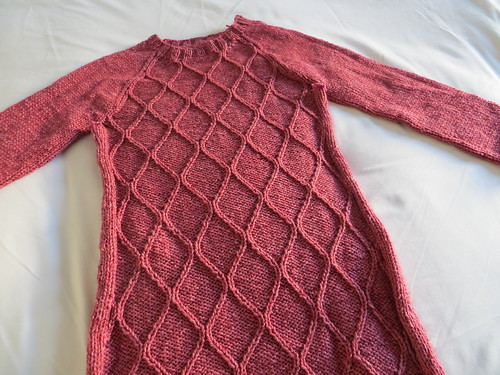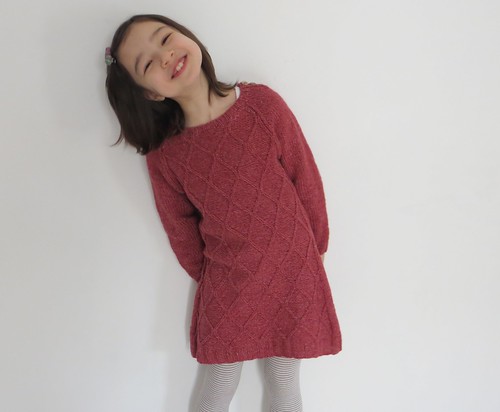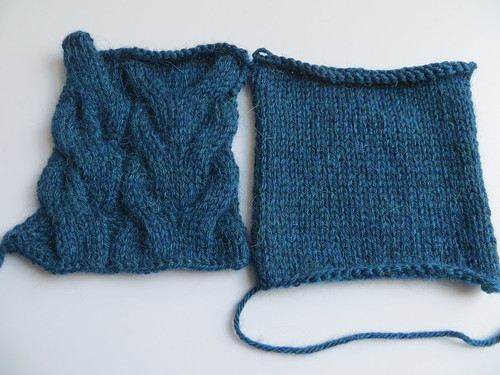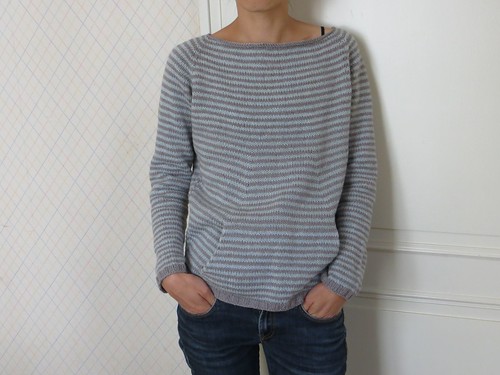This symptom named Quadrature for Korrigan keeps you warm and also keeps you from breaking away from the fever, especially when you'd already had precursors such as
 ,
,  and
and
 .
.The Quadrature is a part of All Korrigan, which contains baby cardigan, girl cardigan, hat for all the family and this baby blanket, and whose hallmark is these beautiful decreasing cables.
We have no baby but I'd wanted to make this blanket for a long time, and here's why.
Isn't it lovely?
This project has two totally different phases. You begin with a few stitch from the center and work in the round in St st, increasing beside the axes as you go. This phase is perfect for TV knitting, while the final border demands more concentration with p rnds and cables (and increases). Needless to say it's rewarding and through the St st part, you're looking forward to working it.
I had some problems concerning the proportion to keep for this border.
This pattern offers a bonus version for adventurous knitters who want to make a larger blanket, work with other gauge and/or knit larger cables. As this blanket is for us, I'd bought 825 m/902 y of yarn (instead of 625 m for baby blanket) to make a larger one.
Well, the more you work in St st, the less proportion you need to keep for the border as the number of rnds is fixed (34 or 50 rnds). But when your yardage is limited, you need to find the point (=the proportion) to begin the border in order not to run short of yarn. I realized too late that I'd worked in St st more than I had to (7 balls of 11, more than 63%), whereas if I'd work larger cables, I needed to stop at 40% (60% for the border). I decided to work "normal" cables to unravel less portion, because I need about 50% for the border. I was afraid that the border would be too narrow compared to the St st part, but that's not the case, it's nice as it is (this is my personal opinion:) ).
I've liked the yarn, Nepal from Drops (65% wool/35% alpaca, 75 m/50g ball). It's warm, soft, fluffy, very agreeable to work with and reasonable! I'm sure to use it for other projects.
To conclude, despite several unravellings (see my Ravelry page), I love the result!
Project data
Pattern: Quadrature for Korrigan by Solenn Couix-Loarer
Yarn: Drops, Nepal: #0500, 10.5 balls (787 m/861 y)
Needle: 5.5 mm / US 9
Gauge after blocking: 15.5 sts per 10 cm/4"
Notes: 93 sts between markers before the border part (I could have begun with 95 sts)
on Ravelry | in French | in Japanese
























